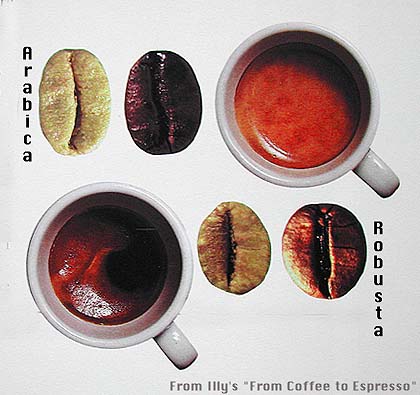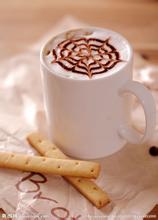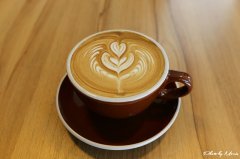Japanese Coffee Culture the situation of Japanese coffee market ordinary coffee and instant coffee boutique coffee
At first, the Japanese were not used to the aroma of coffee houses in Western Europe. At the time when coffee culture literature and art were in full bloom, Japan was in the midst of the strict policy of isolation in the Edo period. Coffee, the first drink of its time, was established at the Dutch Chamber of Commerce in Dejima, Nagasaki (1641), presumably brought in at that time. However, those who can come into contact with foreigners are servants (officials), businessmen, interpreters and tourists. In 1776, Zumberu's "Chronicles of Japan" was recorded,"Two or three translations finally know the taste of coffee." Coffee, a symbol of foreign culture that was specially transmitted to the island, could not be popularized at that time.

The Japanese drink coffee in 1804, the author of the crazy singer drama, Daejeon Shushan people in "Qiongpu Youzui" a book, in the red hair ship was invited to drink something called "coffee", beans fried black powder, mixed with white sugar after drinking, taste bitter smell and bitter taste can not adapt. From the background that coffee is imported from the island and is not widely accepted, the policy of isolation does affect the Japanese people's unaccustomed taste of new drinks.
In 1823, he went to the Dutch residence in Dejima, Japan, and seemed to like coffee. In the book "Edo Sanfu Notes," it is recorded that "Japanese people like to drink coffee when they get along with us."
The real popularity began in the middle of Meiji. Members of the magazine "Aki" Kitahara Shiraaki, Ishikawa Takaki, Takamura Kotaro, Sato Haruo, Nagai Karikaze, etc. use the "Hongno Nest" site in Nihonbashi Onet Town as their monthly meeting place. In that shop you can drink authentic French cuisine and wine, coffee is authentic French style deep roast coffee. Hong's nest is like a social arena for literati.
From the Meiji era to the Taisho era, cultural salons like this did help create several coffee houses, and Japan finally entered the coffee culture. However, it was still a rare shop for ordinary people.
Coffee salons formed at that time were social places for literati or literary youth, but at the same time, cheap coffee houses were unconsciously popular. At the height of the Taisho era, there were more than 20 branches nationwide. Why are coffee salons so popular? Because in the high-end Western restaurant coffee, then a cup of 15 money, and imitation of Paris or New York coffee shop, then thoroughly implement a cup of 5 money of low-priced coffee. So for a third of the price, you can have authentic and aromatic Brazilian coffee. At the famous coffee salons in the country, the number of Japanese who taste delicious coffee is countless. Coffee salons leave an indelible legacy for popular coffee.
Coffee lovers did increase a lot in the Taisho era, and they became more popular in the Zhaowa era. However, during World War II, coffee was stopped because it was an "enemy drink". Coffee disappeared from Japanese life for a while. Coffee is appreciated and loved as a "messenger of peace."
The coffee market in Japan is very competitive. Includes tea shop and home regular coffee and instant coffee, home coffee and office coffee, a variety of canned coffee, plus hospitality coffee, delicious coffee and so on. Especially in the Heisei era, the demand for more authentic coffee also increased.
Important Notice :
前街咖啡 FrontStreet Coffee has moved to new addredd:
FrontStreet Coffee Address: 315,Donghua East Road,GuangZhou
Tel:020 38364473
- Prev

Introduction of Yunnan small Grain Coffee with good quality in China
Lujiangba in Baoshan, Yunnan Province is a unique dry and hot valley climate in Yunnan Province and even the whole country, which is very suitable for the growth of Arabica (small grain coffee). Lujiang Dam, Longyang District, is located at the eastern foot of Gaoligong Mountain and on both sides of Nujiang River. it is located at 98449905 east diameter, 24462533 north latitude and 3510 meters above sea level. most of the small grain coffee planting area is in the area of 8001200 meters above sea level, and a small part has been planted.
- Next

The best coffee in Japan, the best selling coffee and the best coffee producing area in Japan.
No.2 Doutor Coffee, I think Doutor Coffee's coffee is for the Japanese. The coffee beans baked directly in our own factory are very fragrant and rich, and the food on the food menu is very delicious. There are a lot of people who support Doutor because of delicious food.
Related
- What documents do you need to go through to open a coffee shop? coffee shop coffee shop certificate processing process
- How to purchase Coffee beans in small Cafe how to choose a suitable supplier for domestic Coffee supply Company
- How to drink Starbucks Fragrance White Coffee? how to make Australian White Coffee? what Italian coffee beans are recommended?
- The Story of Flora Coffee: the name of Flora Coffee Bean and the implication of the Flowers on Florna Coffee
- How much does a cup of coffee cost? How much is the profit of a cup of coffee? What is the profit of the coffee shop in a year?
- Yunnan small Coffee, known as "fragrant Coffee", introduces the characteristics of Alpine Arabica Coffee producing areas in Yunnan, China
- 2023 latest Starbucks full menu price list how much is a cup of Starbucks coffee what is better to drink the most popular hot and cold drinks recommended
- Starbucks different kinds of Coffee Price list Starbucks menu 2023 Top Ten Best drinks in Starbucks
- Starbucks Spring praise Comprehensive matching Coffee Bean theme Story Packaging implication and taste description
- The cost of a cup of coffee latte American coffee cost price and selling price

